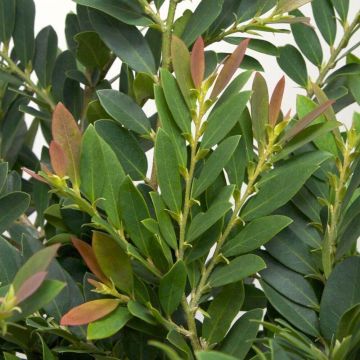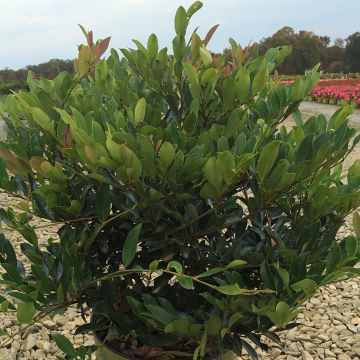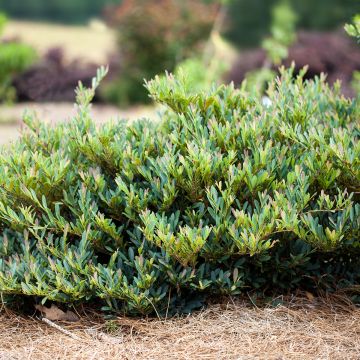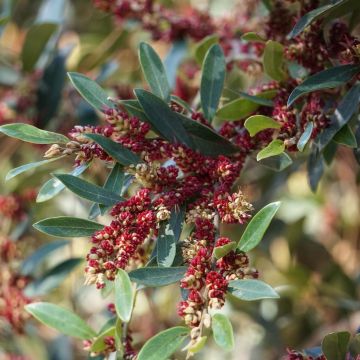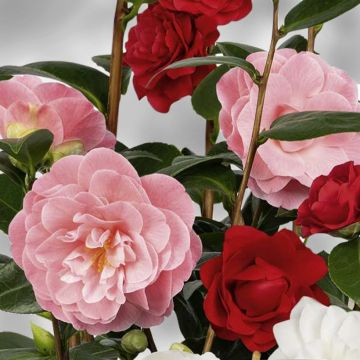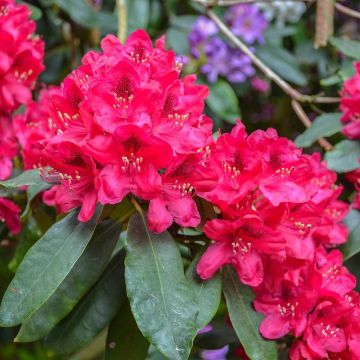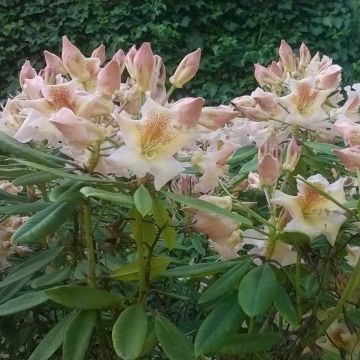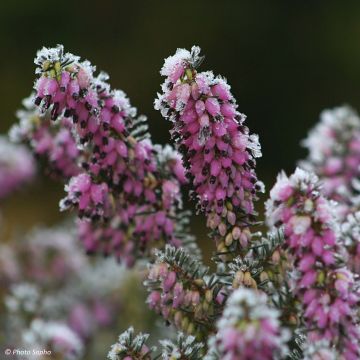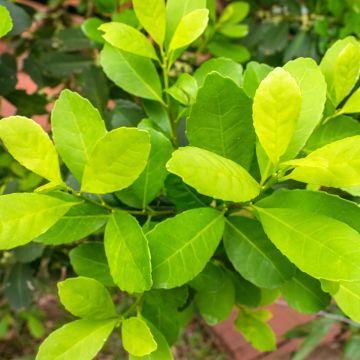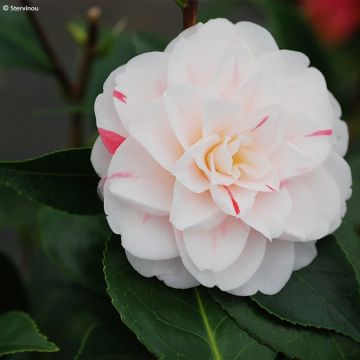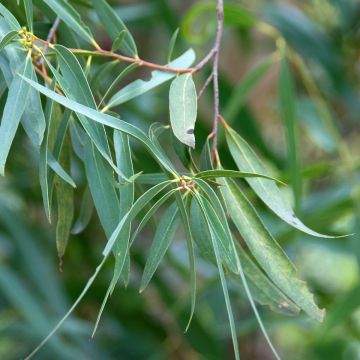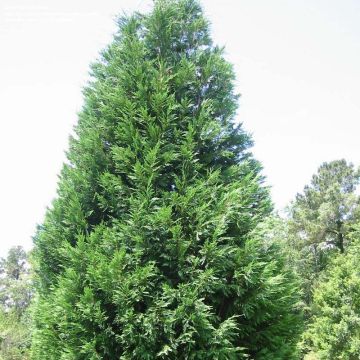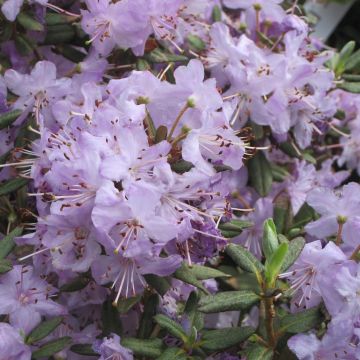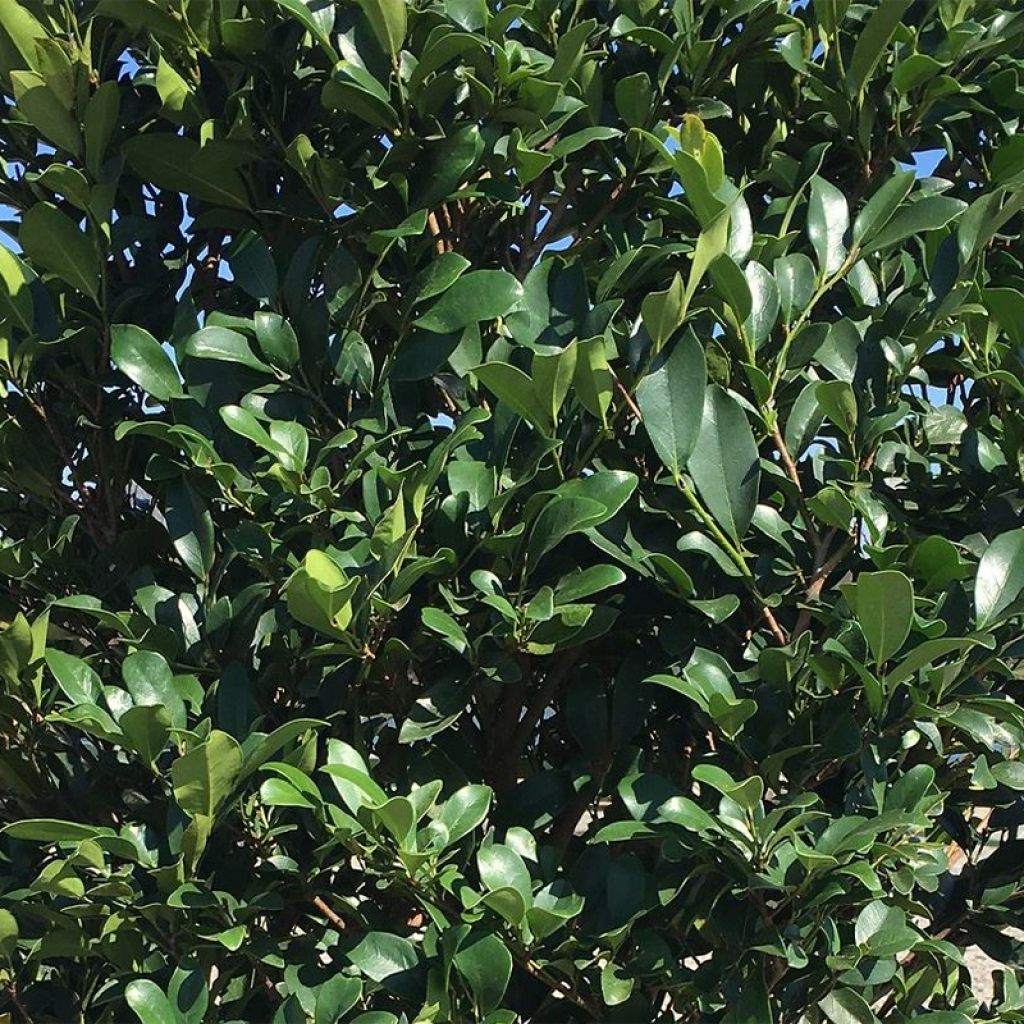

Distylium First Editions Linebacker
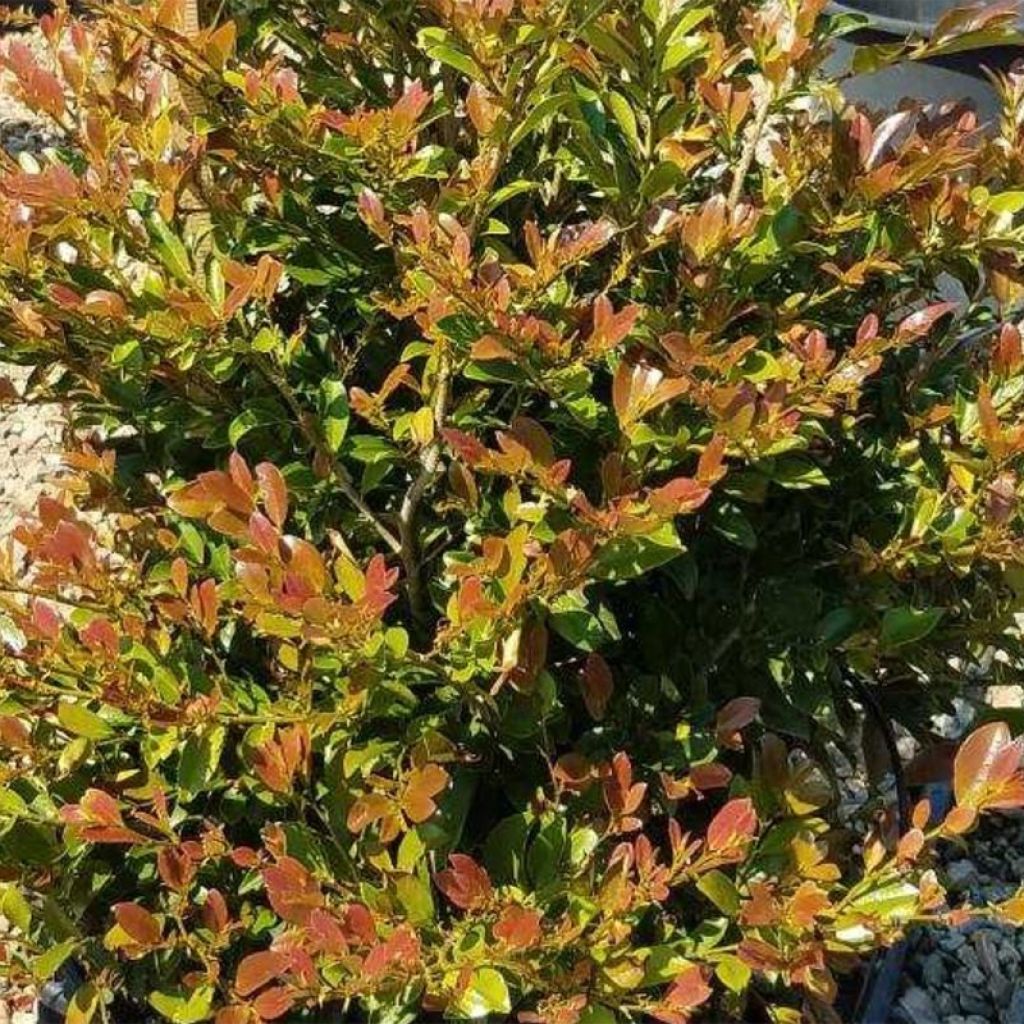

Distylium First Editions Linebacker
Distylium Linebacker
Distylium Linebacker
Isu Tree
The shrub has grown well, it is going to bloom.
TEZAM, 11/03/2024
This item cannot be shipped to the selected country
Delivery charge from €5.90
Delivery charge from €5.90
More information
Schedule delivery date,
and select date in basket
This plant carries a 24 months recovery warranty
More information
We guarantee the quality of our plants for a full growing cycle, and will replace at our expense any plant that fails to recover under normal climatic and planting conditions.
From €5.90 for pickup delivery and €6.90 for home delivery
Express home delivery from €8.90.
From €5.90 for pickup delivery and €6.90 for home delivery
Express home delivery from €8.90.
Does this plant fit my garden?
Set up your Plantfit profile →
Description
Distylium 'Linebacker' is an evergreen bush that is still very little used in our gardens despite its many qualities. With dense and well-occluding vegetation throughout the year, it resists diseases and tolerates pruning, drought and heat, while also accommodating moist soils. In mild climates, this hybrid is an excellent alternative to laurel, boxwood or other thuja for creating a beautiful privacy screen or windbreak. Elegant with its glossy foliage of fairly fine texture, this cousin of Hamamelis also offers red young shoots and dark red flowers in winter. Hardy down to -15°C, it prefers sun in the north, partial shade in hot climates, and only dislikes excessively chalky soils.
Distylium Linebacker PP25,984 is a horticultural hybrid obtained by cross-breeding between Distylium myricoides and Distylium racemosum, two species native to eastern and southeastern Asia belonging to the hamamelidaceae family. It blooms in winter (February-March), with axillary clusters of small petal-less flowers, composed of reddish-brown stamens. This moderately fast-growing distylium forms a bush reaching about 2.70 m (8 ft 11 in) in height and 2 m (6 ft 7 in) in width. Its habit is dense and slightly spreading. Its evergreen foliage consists of small, leathery, entire, alternate, obovate to lanceolate leaves, reddish-copper in spring, becoming dark green for the rest of the year. They resemble laurel leaves in shape, but are disease-free.
Distylium Linebacker will naturally find a place in an informal or trimmed hedge, as well as in a shrub border. In an evergreen hedge, it can be associated with viburnum tinus, Japanese spindle trees, Portuguese laurel Brenelia, and photinias, for example. In a mixed hedge or border, it can be mixed with forsythias, Japanese quinces, Chinese lilacs, botanical roses, privets, or dogwoods to stagger the flowering. It blends well in Japanese gardens, as well as in dry shrub borders, as it tolerates water deficiency in deep soil.
Boxwoods have been experiencing some setbacks for the past ten years, as a spreading disease causes them to wither. Distylium is an excellent alternative that is not susceptible to this pest.
Report an error about the product description
Distylium Linebacker in pictures
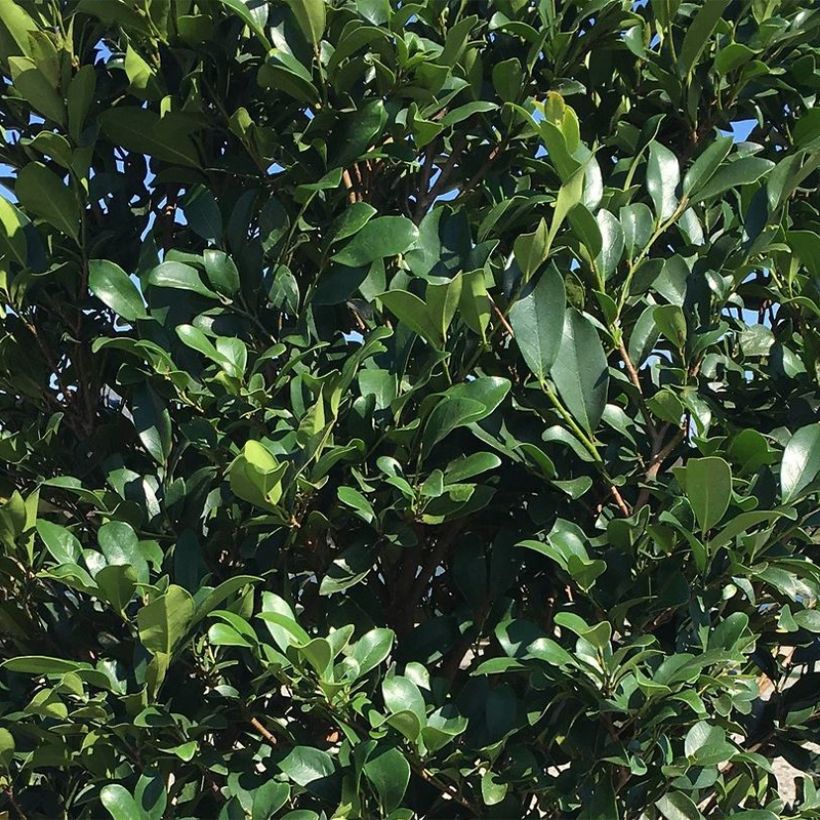

Plant habit
Flowering
Foliage
Botanical data
Distylium
Linebacker
Hamamelidaceae
Isu Tree
Cultivar or hybrid
Other Distylium
Planting and care
Distylium 'First Editions Linebacker' is a low-maintenance bush that is easy to grow in most climates. It thrives in the sun in cool climates or partial shade further south, in deep soil that is not excessively chalky, well loosened, and rather fertile. Once well-rooted, this bush can go without watering in the summer. Excessive limestone can cause its foliage to turn yellow, especially in heavy soils. If this occurs, treat it with iron chelate. This bush can tolerate temperatures as low as -15°C (5 °F) when mature, so it plant in a sheltered location in very cold climates. In spring, apply fertilizer. Pruning is not necessary, but it is well tolerated. If desired, lightly prune after flowering and remove branches that compromise its habit.
Planting period
Intended location
Care
-
, onOrder confirmed
Reply from on Promesse de fleurs
Evergreen shrubs
Haven't found what you were looking for?
Hardiness is the lowest winter temperature a plant can endure without suffering serious damage or even dying. However, hardiness is affected by location (a sheltered area, such as a patio), protection (winter cover) and soil type (hardiness is improved by well-drained soil).

Photo Sharing Terms & Conditions
In order to encourage gardeners to interact and share their experiences, Promesse de fleurs offers various media enabling content to be uploaded onto its Site - in particular via the ‘Photo sharing’ module.
The User agrees to refrain from:
- Posting any content that is illegal, prejudicial, insulting, racist, inciteful to hatred, revisionist, contrary to public decency, that infringes on privacy or on the privacy rights of third parties, in particular the publicity rights of persons and goods, intellectual property rights, or the right to privacy.
- Submitting content on behalf of a third party;
- Impersonate the identity of a third party and/or publish any personal information about a third party;
In general, the User undertakes to refrain from any unethical behaviour.
All Content (in particular text, comments, files, images, photos, videos, creative works, etc.), which may be subject to property or intellectual property rights, image or other private rights, shall remain the property of the User, subject to the limited rights granted by the terms of the licence granted by Promesse de fleurs as stated below. Users are at liberty to publish or not to publish such Content on the Site, notably via the ‘Photo Sharing’ facility, and accept that this Content shall be made public and freely accessible, notably on the Internet.
Users further acknowledge, undertake to have ,and guarantee that they hold all necessary rights and permissions to publish such material on the Site, in particular with regard to the legislation in force pertaining to any privacy, property, intellectual property, image, or contractual rights, or rights of any other nature. By publishing such Content on the Site, Users acknowledge accepting full liability as publishers of the Content within the meaning of the law, and grant Promesse de fleurs, free of charge, an inclusive, worldwide licence for the said Content for the entire duration of its publication, including all reproduction, representation, up/downloading, displaying, performing, transmission, and storage rights.
Users also grant permission for their name to be linked to the Content and accept that this link may not always be made available.
By engaging in posting material, Users consent to their Content becoming automatically accessible on the Internet, in particular on other sites and/or blogs and/or web pages of the Promesse de fleurs site, including in particular social pages and the Promesse de fleurs catalogue.
Users may secure the removal of entrusted content free of charge by issuing a simple request via our contact form.
The flowering period indicated on our website applies to countries and regions located in USDA zone 8 (France, the United Kingdom, Ireland, the Netherlands, etc.)
It will vary according to where you live:
- In zones 9 to 10 (Italy, Spain, Greece, etc.), flowering will occur about 2 to 4 weeks earlier.
- In zones 6 to 7 (Germany, Poland, Slovenia, and lower mountainous regions), flowering will be delayed by 2 to 3 weeks.
- In zone 5 (Central Europe, Scandinavia), blooming will be delayed by 3 to 5 weeks.
In temperate climates, pruning of spring-flowering shrubs (forsythia, spireas, etc.) should be done just after flowering.
Pruning of summer-flowering shrubs (Indian Lilac, Perovskia, etc.) can be done in winter or spring.
In cold regions as well as with frost-sensitive plants, avoid pruning too early when severe frosts may still occur.
The planting period indicated on our website applies to countries and regions located in USDA zone 8 (France, United Kingdom, Ireland, Netherlands).
It will vary according to where you live:
- In Mediterranean zones (Marseille, Madrid, Milan, etc.), autumn and winter are the best planting periods.
- In continental zones (Strasbourg, Munich, Vienna, etc.), delay planting by 2 to 3 weeks in spring and bring it forward by 2 to 4 weeks in autumn.
- In mountainous regions (the Alps, Pyrenees, Carpathians, etc.), it is best to plant in late spring (May-June) or late summer (August-September).
The harvesting period indicated on our website applies to countries and regions in USDA zone 8 (France, England, Ireland, the Netherlands).
In colder areas (Scandinavia, Poland, Austria...) fruit and vegetable harvests are likely to be delayed by 3-4 weeks.
In warmer areas (Italy, Spain, Greece, etc.), harvesting will probably take place earlier, depending on weather conditions.
The sowing periods indicated on our website apply to countries and regions within USDA Zone 8 (France, UK, Ireland, Netherlands).
In colder areas (Scandinavia, Poland, Austria...), delay any outdoor sowing by 3-4 weeks, or sow under glass.
In warmer climes (Italy, Spain, Greece, etc.), bring outdoor sowing forward by a few weeks.

































